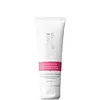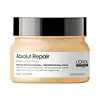What's inside
What's inside
 Benefits
Benefits

 Concerns
Concerns

 Ingredients Side-by-side
Ingredients Side-by-side

Water
Skin ConditioningRicinus Communis Seed Oil
MaskingGlycerin
HumectantPropylene Glycol
HumectantCetearyl Alcohol
EmollientEthylhexyl Dimethyl Paba
UV AbsorberOlea Europaea Fruit Oil
MaskingCetrimonium Chloride
AntimicrobialAmodimethicone
Phenoxyethanol
PreservativeGuar Hydroxypropyltrimonium Chloride
Skin ConditioningEthylhexylglycerin
Skin ConditioningHydrolyzed Elastin
EmollientTrideceth-12
EmulsifyingSodium Benzoate
MaskingCitric Acid
BufferingWater, Ricinus Communis Seed Oil, Glycerin, Propylene Glycol, Cetearyl Alcohol, Ethylhexyl Dimethyl Paba, Olea Europaea Fruit Oil, Cetrimonium Chloride, Amodimethicone, Phenoxyethanol, Guar Hydroxypropyltrimonium Chloride, Ethylhexylglycerin, Hydrolyzed Elastin, Trideceth-12, Sodium Benzoate, Citric Acid
Water
Skin ConditioningCetearyl Alcohol
EmollientBehentrimonium Chloride
PreservativeCandelilla Cera
EmollientAmodimethicone
Cetyl Esters
EmollientIsopropyl Alcohol
SolventGlycerin
HumectantPhenoxyethanol
PreservativeTrideceth-6
EmulsifyingLinalool
PerfumingLactic Acid
BufferingHexyl Cinnamal
PerfumingChlorhexidine Digluconate
AntimicrobialCetrimonium Chloride
AntimicrobialLimonene
PerfumingSodium Hydroxide
BufferingChenopodium Quinoa Seed Extract
Skin ConditioningHydroxypropyltrimonium Hydrolyzed Wheat Protein
Skin ConditioningCI 19140
Cosmetic ColorantCI 15985
Cosmetic ColorantParfum
MaskingWater, Cetearyl Alcohol, Behentrimonium Chloride, Candelilla Cera, Amodimethicone, Cetyl Esters, Isopropyl Alcohol, Glycerin, Phenoxyethanol, Trideceth-6, Linalool, Lactic Acid, Hexyl Cinnamal, Chlorhexidine Digluconate, Cetrimonium Chloride, Limonene, Sodium Hydroxide, Chenopodium Quinoa Seed Extract, Hydroxypropyltrimonium Hydrolyzed Wheat Protein, CI 19140, CI 15985, Parfum
 Reviews
Reviews

Ingredients Explained
These ingredients are found in both products.
Ingredients higher up in an ingredient list are typically present in a larger amount.
This water-soluble silicone is used for its hydrating and softening properties. It is used to add a silky feel to skincare products and has great benefits for haircare.
In haircare, this ingredient:
- Adds shine
- Protects color
- Offers thermal protection
- Boosts hair strength
- Does not build up as easily
Cetearyl alcohol is a mixture of two fatty alcohols: cetyl alcohol and stearyl alcohol. It is mainly used as an emulsifier. Emulsifiers help prevent the separation of oils and products. Due to its composition, it can also be used to thicken a product or help create foam.
Cetearyl alcohol is an emollient. Emollients help soothe and hydrate the skin by trapping moisture.
Studies show Cetearyl alcohol is non-toxic and non-irritating. The FDA allows products labeled "alcohol-free" to have fatty alcohols.
This ingredient is usually derived from plant oils such as palm, vegetable, or coconut oils. There is debate on whether this ingredient will cause acne.
Due to the fatty acid base, this ingredient may not be Malassezia folliculitis safe.
Learn more about Cetearyl AlcoholThis ingredient is a preservative, antimicrobial, and emulsifier. It is often used in cosmetics for its ability to cleanse, condition, and reduce static.
Cetrimonium chloride is a quaternary ammonium salt, meaning it has a water-soluble structure.
Glycerin is already naturally found in your skin. It helps moisturize and protect your skin.
A study from 2016 found glycerin to be more effective as a humectant than AHAs and hyaluronic acid.
As a humectant, it helps the skin stay hydrated by pulling moisture to your skin. The low molecular weight of glycerin allows it to pull moisture into the deeper layers of your skin.
Hydrated skin improves your skin barrier; Your skin barrier helps protect against irritants and bacteria.
Glycerin has also been found to have antimicrobial and antiviral properties. Due to these properties, glycerin is often used in wound and burn treatments.
In cosmetics, glycerin is usually derived from plants such as soybean or palm. However, it can also be sourced from animals, such as tallow or animal fat.
This ingredient is organic, colorless, odorless, and non-toxic.
Glycerin is the name for this ingredient in American English. British English uses Glycerol/Glycerine.
Learn more about GlycerinPhenoxyethanol is a preservative that has germicide, antimicrobial, and aromatic properties. Studies show that phenoxyethanol can prevent microbial growth. By itself, it has a scent that is similar to that of a rose.
It's often used in formulations along with Caprylyl Glycol to preserve the shelf life of products.
Water. It's the most common cosmetic ingredient of all. You'll usually see it at the top of ingredient lists, meaning that it makes up the largest part of the product.
So why is it so popular? Water most often acts as a solvent - this means that it helps dissolve other ingredients into the formulation.
You'll also recognize water as that liquid we all need to stay alive. If you see this, drink a glass of water. Stay hydrated!
Learn more about Water